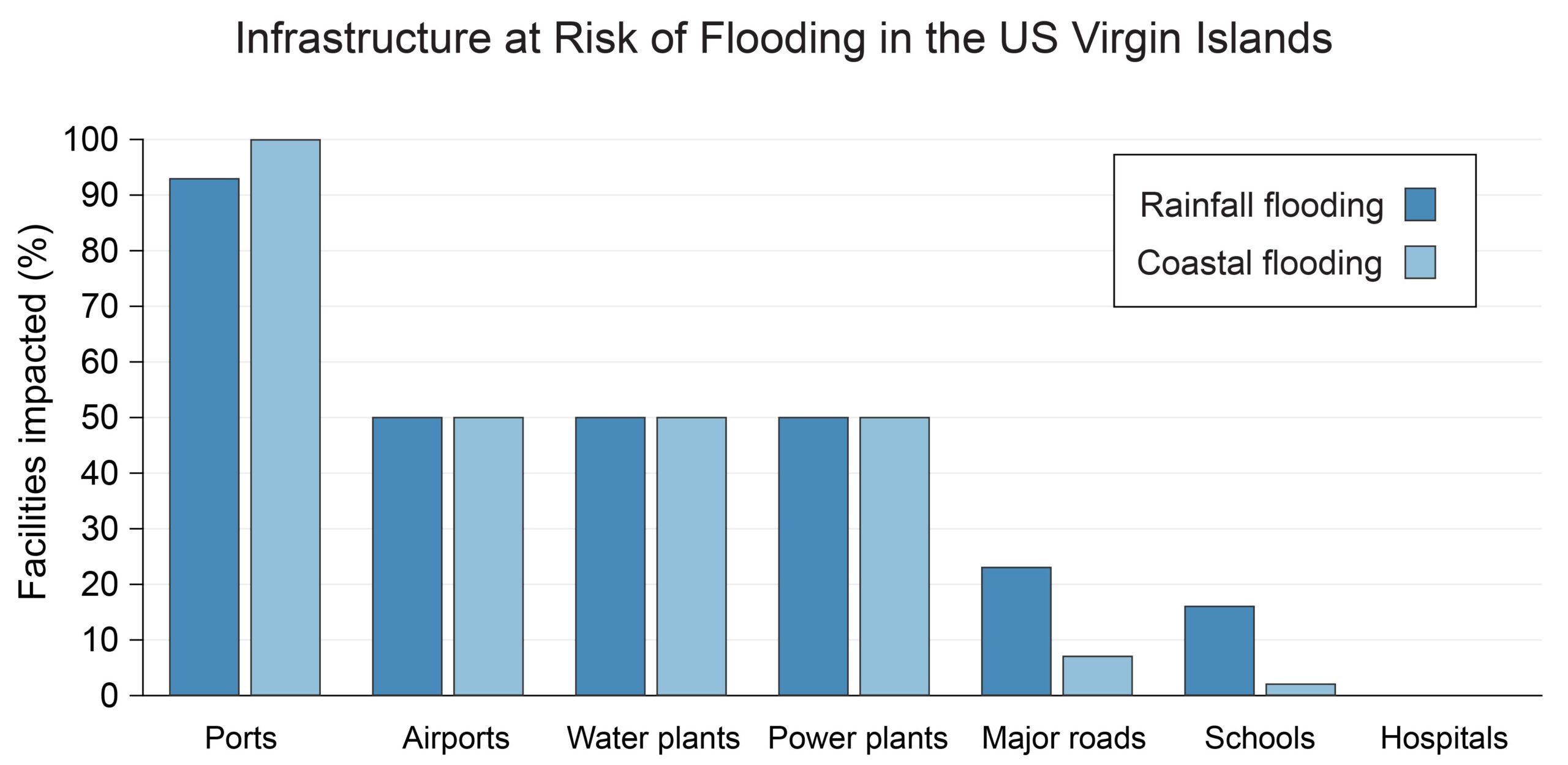There’s very little warm and sunny in the near future for the Virgin Islands or Puerto Rico, as depicted in a recent climate change overview.
Rather, the two U.S. territories can look forward to more severe hurricanes, devasting droughts, increased flooding, and all the ripple effects that catastrophes can trigger, from plagues of disease-bearing insects to contaminated water sources to reduced crop yields and excessive strain on physical, emotional, and mental health.

The islands are described as especially vulnerable because of their exposed coastlines, their abundance of aged and neglected infrastructure and the general lack of collective will to address global warming and mitigate its effects.
The grim picture is contained in a chapter on the “U.S. Caribbean” in the latest National Climate Assessment. A collaborative effort by myriad scientists and researchers, the report has been produced approximately every four years since 2006.
The U.S. Global Change Research Program oversees the assessment. Originally, the analyses concentrated on regions in the lower 48 states, but the fourth edition contained a chapter about the two U.S. territories located in the Caribbean, Puerto Rico, with its 3,515 square miles (700 miles of which are coastline) and three million people and its much smaller neighbor, the 133-square-mile Virgin Islands, with 175 miles of shoreline and, according to the 2020 Census, a little more than 87,000 residents.
The fifth and most recent edition of the National Climate Assessment was released late in 2023.
The fourth report detailed such geophysical effects of climate change as the amount of current and anticipated sea level rise and consequent shore erosion. The latest edition builds on that information and also focuses on the consequences of these changes for the people living in the islands.
Not new is the idea that climate change is widening the swing from extreme dry conditions to extreme flooding events.
“Hurricanes, increasingly powerful storms and rising sea levels are already harming human health, ecosystems, water and food supplies and critical infrastructure in the U.S. Caribbean, with underserved communities suffering disproportionate impacts,” the report states. By the end of this century, the tropical cyclone rain rate is expected to increase by about 15 percent, and the wind is expected to be about three percent stronger.
“Climate change is also causing higher temperatures and drier conditions, thereby reducing water availability, increasing water demand, and intensifying saltwater intrusion into aquifers,” the report says. The daily average temperature in Puerto Rico has already increased by two degrees Fahrenheit since 1950. (Similar data is not available for the V.I.)

All of that is expected to increase what is already significant competition for water, which is needed for agriculture and electricity production, as well as direct human consumption.
Another water-related concern is the potential for groundwater contamination. Both territories have “superfund” sites, areas with toxic waste that the Environmental Protection Agency has declared hazardous.
There are two V.I. sites: the Tutu Wellfield in eastern St. Thomas and the former Island Chemical Corp./V.I. Chemical Corp. in southwestern St. Croix.
Problems surfaced in both areas in the 1980s and led to closures and decades-long EPA involvement. Benzene, toluene and trichloroethene were among the contaminants found at Tutu, and chloroform, benzyl acetate and benzyl salicylate were some of the chemicals found at the former manufacturing site on St. Croix.
The report warns that extreme flooding could possibly lead to the spread of “large amounts” of contaminants and carcinogens from a superfund site into the surrounding area.
In addressing the issue of increasing storm intensity, the researchers didn’t have to look hard for examples. The back-to-back Category 5 hurricanes of September 2017, Irma and Maria, damaged 12 percent of the region’s corals, caused beach loss of between 1.2 miles and 3.1 miles, and devastated one-third of the region’s mangroves.
The hurricanes also “demonstrated the vulnerability of critical infrastructure (e.g., energy, water, healthcare, transportation, telecommunications, wastewater, stormwater, and solid waste).”
Both short and long-term loss of infrastructure elements caused myriad ripple effects. Healthcare services, for instance, were stunted, and for varying periods of time, residents lost access to vaccinations, cervical cancer screenings, dialysis, oncological treatment and many other services.
At the same time, transportation interruptions caused some food scarcity since 90 percent of the food consumed in the Virgin Islands (and 80 percent of food consumed in Puerto Rico) is shipped into the islands.
Most obvious was the loss of electrical service, with consequences ranging from the inconvenient and uncomfortable to the life-altering and even life-threatening.
Much of that, the report suggests, might have been avoided or at least mitigated with proper planning.
Although “the recurrence of powerful tropical storms” is one reason for infrastructure vulnerability, it is also the result of “deferred maintenance” and of “a centralized mode of production and governance that limits redundancy, flexibility, and, therefore, the ability to anticipate and adapt to future scenarios that climate change will create,” according to the report.
While their geographic isolation and relatively small size make the islands especially susceptible to problems from climate change, those same factors could also help the “U.S. Caribbean” become the poster child for successful mitigation efforts.
“For Puerto Rico and the USVI, significant financial resources could be made accessible for climate adaptation and comprehensive disaster management,” the report says.
“However,” it continues, “effective adaptation planning is impeded by limited uptake of climate change information in decision-making, weak linkages between programs, and insufficient institutional capacity for prioritizing initiatives and designing linked operational systems across multiple organizations.”
The report notes there has been a rise in “sustainable development efforts” by community-based organizations in response to inaction by government. A 2016 “climate change initiative” for the Virgin Islands, sponsored by the U.S. Interior Department, garnered support from civil society organizations.
“However,” the report says, “there is currently no climate change adaptation program in the USVI, and the inadequate uptake of climate change information for decision-making identified in 2016 is still reflected in current public sector policies and programs in both the USVI and Puerto Rico.”
To access the U.S. Caribbean section of the report, click here.





